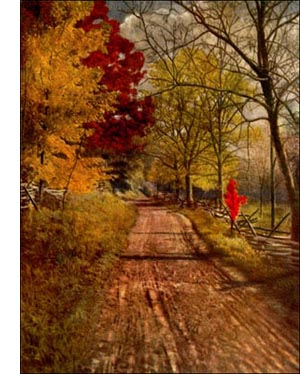English Oak Tree
 The English oak (Quercus Robur) is the only oak native to the British Isles. It is the patriarch of the forest, noblest in any company of trees, fostered in its youth, cherished and revered in its old age, depended upon in its prime for its valuable products. The Briton to-day is as fervent a tree worshipper as his Druid ancestors were, but his love for the oak is stripped of superstition and tempered by intelligence. He is a practical man, and while he cherishes the gnarled oaks that adorn his private grounds and public parks, ho has his oak forests for timber as his grain fields for bread. Sense and sentiment are both strong in him, but there is a proper balance between them.
The English oak (Quercus Robur) is the only oak native to the British Isles. It is the patriarch of the forest, noblest in any company of trees, fostered in its youth, cherished and revered in its old age, depended upon in its prime for its valuable products. The Briton to-day is as fervent a tree worshipper as his Druid ancestors were, but his love for the oak is stripped of superstition and tempered by intelligence. He is a practical man, and while he cherishes the gnarled oaks that adorn his private grounds and public parks, ho has his oak forests for timber as his grain fields for bread. Sense and sentiment are both strong in him, but there is a proper balance between them.The English oak is by no means confined to England. It is found all over Europe, where in earlier times it formed extensive forests. It is known in two forms, sessiliflora and pedunculata, varieties dependent upon the absence or presence of stalks of flower and fruit. With age these trees increase in breadth, more than in height, grow stout in trunk and limb, and the branches become extravagantly gnarled and twisted. The prevailing belief as to the age of these oaks is expressed in Dryden's lines:
"Three centuries he grows, and three he stays
Supreme in state; and in three more decays."
There are trees still hale in England to-day which were old enough to cut for their lumber when William the Conqueror landed in 1066. Scientists estimate the limit of longevity among oaks at about 2,000 years.
The British oak grows indifferently in the United States except in California. Here it finds conditions most favourable and grows with great rapidity and vigour. Acorns planted in 1878 were grown into large trees in 1890-to the amazement of everybody.